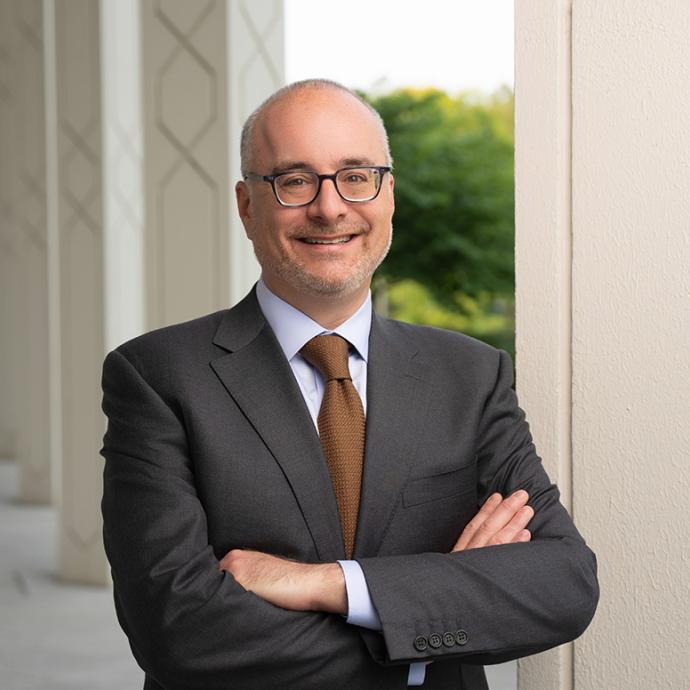Students coming to the School of Social Service Administration for orientation on Monday got a first look at SSA's historic building, which was restored to celebrate theschool's centennial.
During a 15-week project, the Ludwig Mies van der Rohe-designed building at 969 E. 60th St. was repainted, fitted with new glass and "restored to its original luster," in the words of Rico Cedro of the Chicago firm Krueck and Sexton Architects, which handled the project.
"Faculty, staff and students are enthusiastic about launching the school year and the celebration of the school's centennial in the sparkling, renovated Meis Building-a building with open architecture that is iconic for the high levels of interaction and engagement required for social service scholarship and professional training," said Jeanne Marsh, Dean of SSA and the George Herbert Jones Distinguished Service Professor in SSA.
The renovation of the nearly 43-year-old building has enhanced the structure's original purpose, which reflects that of the school: To provide an open space where people from all walks of life gather.
"The huge lobby of the building is a great operations and community space, one that allows us to be flexible with all kinds of events. It really has become a resource, not only for SSA, but for the University and the community," said Keith Madderom, Associate Dean for Administration, who helped oversee the restoration.
Among the projects undertaken was replacing a cracked pane in one of the 12 huge glass panes on the north wall of the building. The glass, which gives the building its unique sense of transparency and brings in light, is a typical challenge. "The glass Mies used in 1965 was different than what you find now. Even one-eighth of an inch (difference in) thickness can create engineering dilemmas," Madderom explained.
The renovation team also had to be careful about paint. While Mies was known for making his buildings black, the paint can no longer be duplicated. For health reasons, lead coating was removed from the original steel, and three coats of high-performance, lead-free paint will be applied.
Barry O'Quinn, a supervisor in Facilities Services at the University, was project manager for the restoration.
One of the most visible changes to the building is yet to come. This winter, new doors will replace those installed in the 1980s. "The front door is both the first and last experience a student has of the building," said Jamie Cook, an architect working on the project. "They will be reconstructed back to their original appearance. The spirit and crispness of the exterior will be visible again."










 —Prof. Kunle Odunsi
—Prof. Kunle Odunsi
